One of the bronze statues found during the excavation in San Casciano dei Bagni | Courtesy Ministry of Culture
The hot mud has protected and restored the reassuring effigies of Hygieia, goddess of health, and of Apollo, protector of the medical arts, and still unusual portraits accompanied by inscriptions that sometimes reveal the names of unpublished divinities as well as the reason for which pardon was requested. granting the bronze on offer.
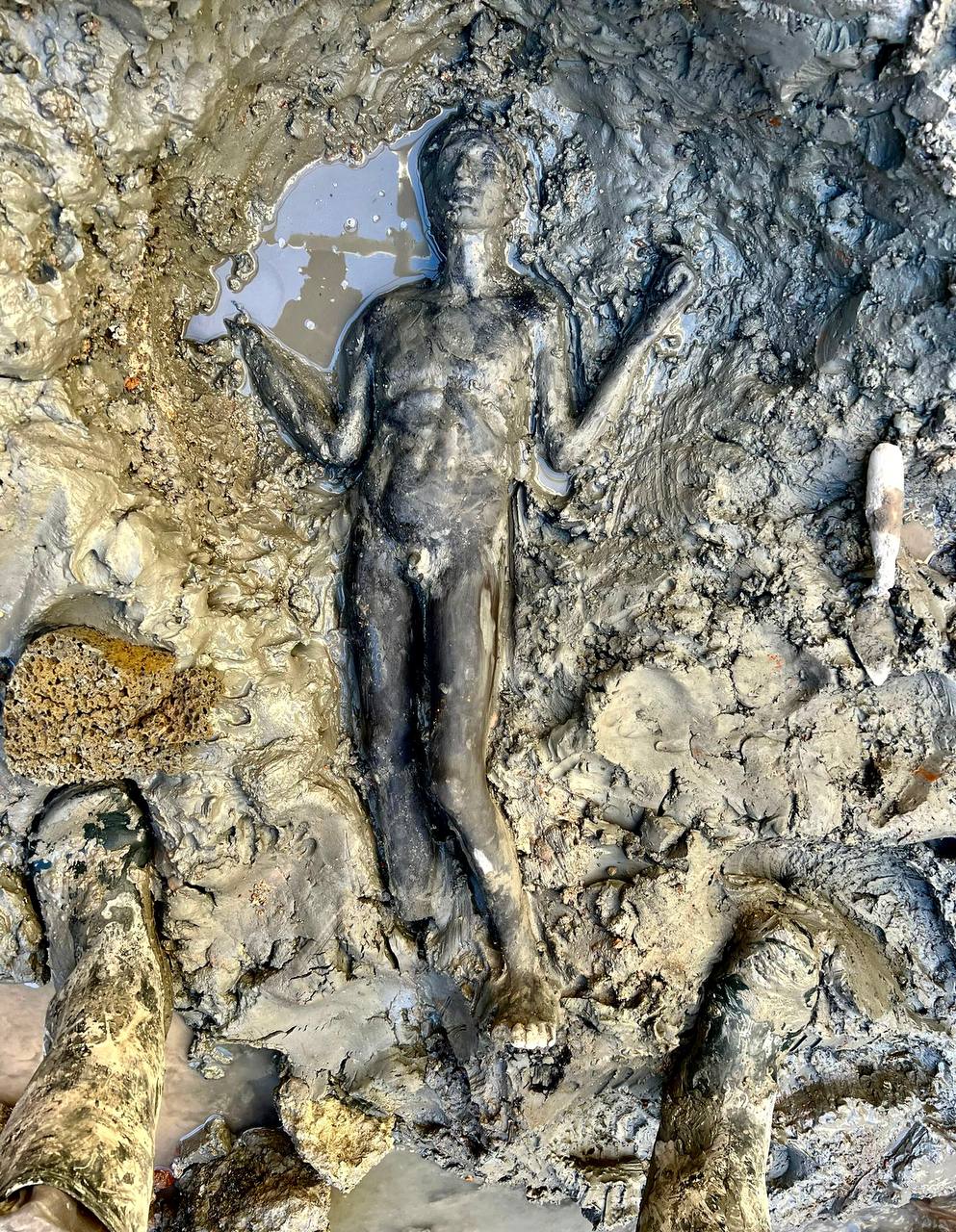
One of the bronze statues found in San Casciano dei Bagni | Courtesy Ministry of Culture
This is the surprising balance of the extraordinary discovery that has seen 24 bronze statues in perfect condition re-emerge from the slopes of the centuries, alongside ex-votos, objects of daily rituals and five thousand gold, bronze and silver coins.
Most of these masterpieces of antiquity are placed between the second century BC and the first century AD, a historical period of important transformations in ancient Tuscany that witnesses the end of the Etruscan tradition and the transition from the Etruscan to the Roman world. To confirm this moment of transition experienced by a still bilingual society, about to open up towards a Mediterranean that was gradually becoming Roman, are the inscriptions (still clearly visible) in Etruscan and at the same time in Latin with the names of powerful families of the territory of Internal Etruria, from the Velimna of Perugia to the Marcni known in the Sienese countryside. In this era of heated contrasts between Rome and the Etruscan cities, social wars and struggles within the social fabric of the city, the sanctuary of Bagno Grande represented an oasis of peace, characterized by a unique multicultural and multilingual context. Here the noble Etruscan families chose to dedicate the statues to sacred water. This is why the discovery of bronzes in San Casciano dei Bagni becomes a unique opportunity to rewrite the dialectic between Etruscans and Romans.
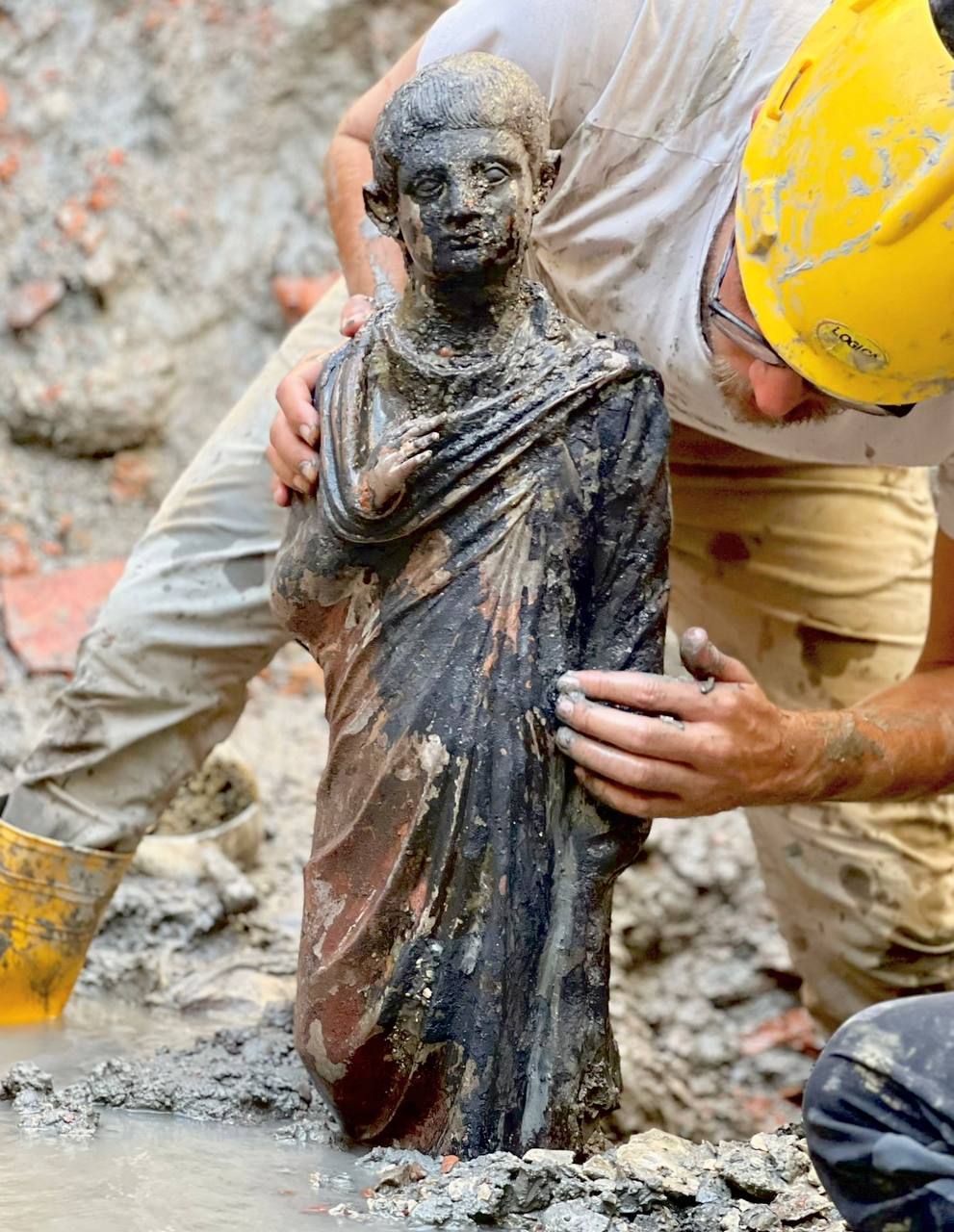
One of the 24 bronze statues found during the excavation in San Casciano dei Bagni | Courtesy Ministry of Culture
And here they are the bronzes come down to us, found during the excavation campaign at the Etruscan-Roman sanctuary connected to the ancient sacred basin of the thermo-mineral spring. Started in 2019, the excavation, promoted by the Ministry of Culture and the Tuscan municipality with the coordination of Professor Jacopo Tabolli of the University for Foreigners of Siena, led to these new extraordinary finds in the first weeks of October. An extraordinary discovery that, as Tabolli explained, “will rewrite history and on which over 60 experts from all over the world are already working.” Thus, 50 years after the discovery of the Riace Bronzes, which took place in 1972, the history of ancient bronze statuary, this time from the Etruscan and Roman ages, returns to write itself in the small Tuscan center which now houses the largest deposit of bronze statues from the Etruscan and Roman ages ever discovered in ancient Italy and one of the most significant in the whole Mediterranean And the discovery is even more extraordinary if we consider that until now, mainly terracotta statues were known from this period.
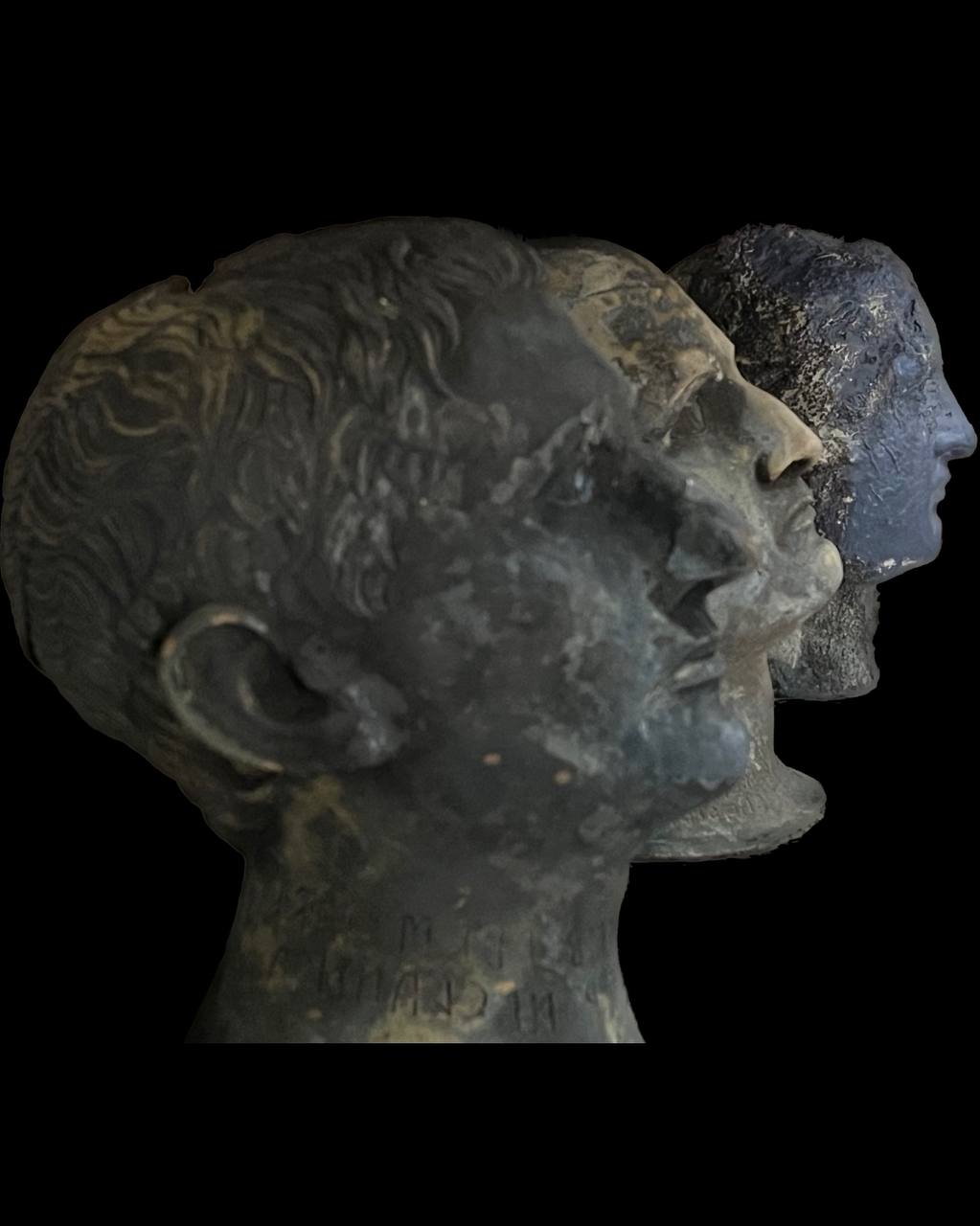
Some of the bronzes found during the excavation in San Casciano dei Bagni | Courtesy Ministry of Culture
“It is the most important discovery from the Riace Bronzes and certainly one of the most significant bronzes ever found in the history of the ancient Mediterranean”, comments the Director General of Museums, Massimo Osanna, who has just approved the purchase of the sixteenth-century building that he will host. in the village of San Casciano, the wonders returned by the Bagno Grande, a new museum to which a real archaeological park will be added in the future.
In fact, as stated by the Minister of Culture, Gennaro Sangiuliano, “The study and enhancement of this treasure will be a further opportunity for the spiritual growth of our culture and for the relaunch of territories less known to international tourism, but also as a driving force for the cultural industry of the nation “.
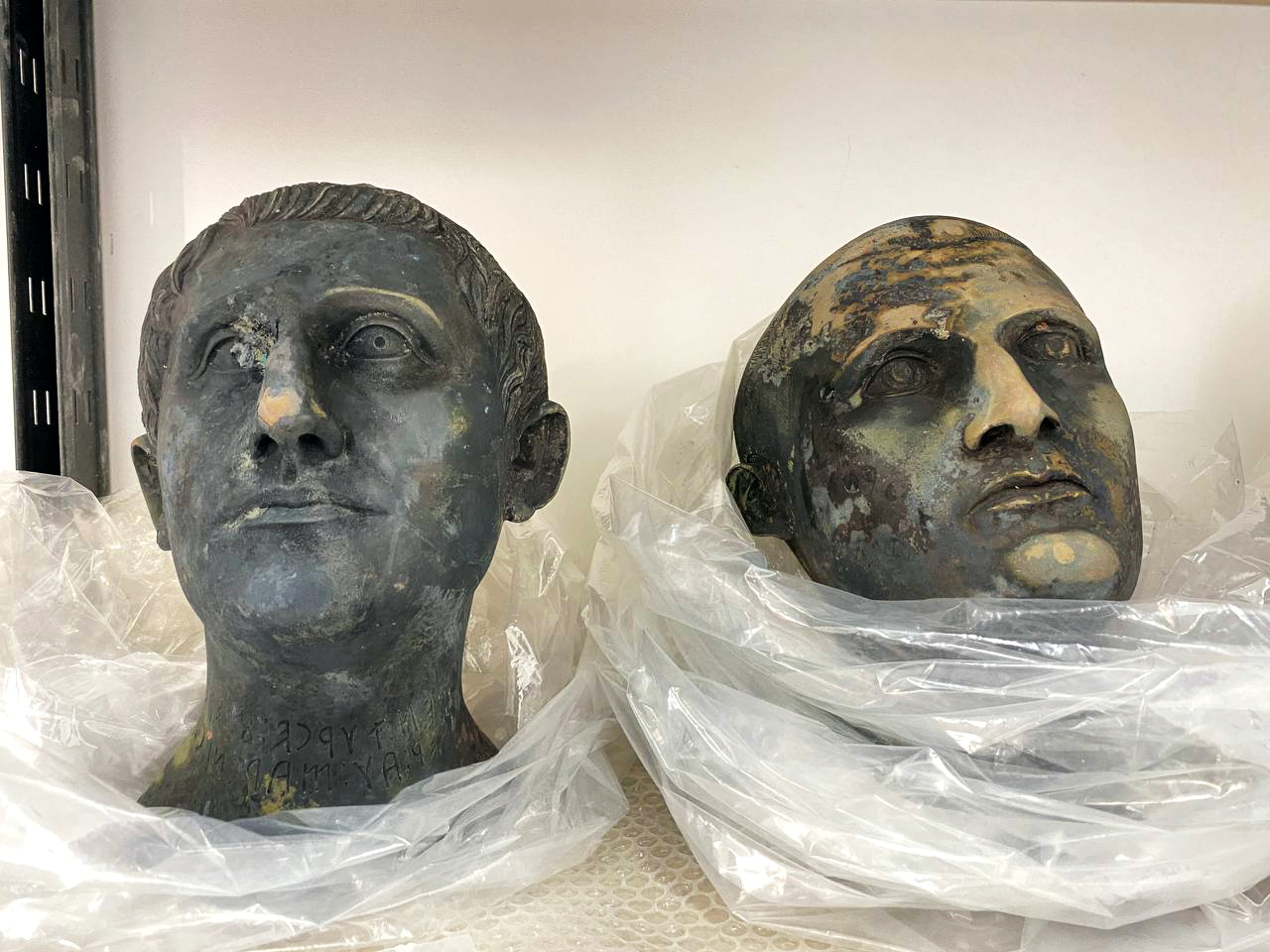
Two bronze heads found during the excavation in San Casciano dei Bagni | Courtesy Ministry of Culture
The method used in this excavation is the result of the collaboration between specialists from different disciplines, from architects to geologists, from archaeobotanists to experts in epigraphy and numismatics.
“The excavation campaign that I had the honor and the pleasure of directing in the field for 14 weeks between June and October – comments the excavation director, Emanuele Mariotti – has obtained amazing and partly unexpected results. It should be noted that the exceptional nature of the context derives not only from the muddy but intact stratigraphies inside the tank, so rich in art and numismatic treasures, but also from the architecture with which the heart was conceived in the early imperial era. of the sanctuary, destined to collect the powerful hot waters of the spring, today of the Bagno Grande ”.
The discovery is the result of a work of synergy between institutions that centered on the Superintendence for the povince of Siena and Grosseto, the University of Siena, and the Municipality of San Casciano dei Bagni.
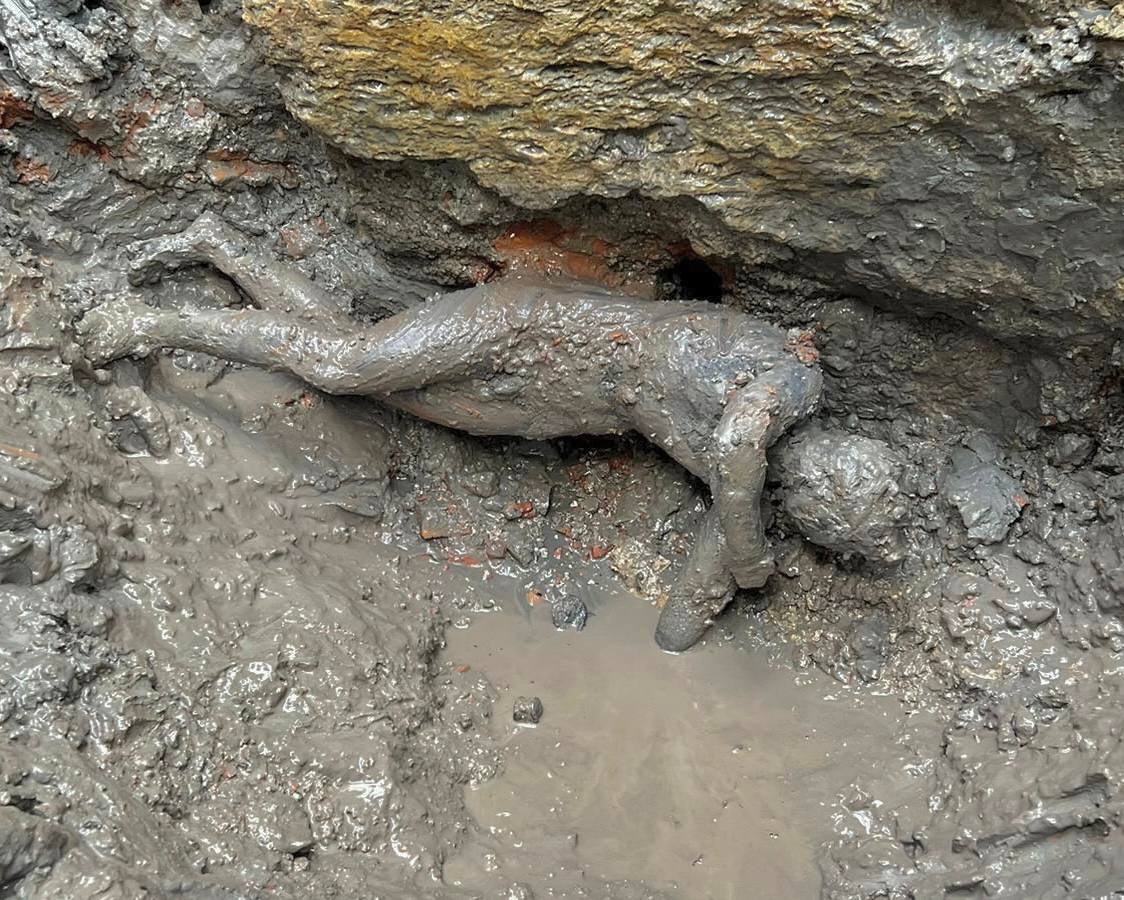
One of the bronze statues found during the excavation in San Casciano dei Bagni | Courtesy Ministry of Culture

